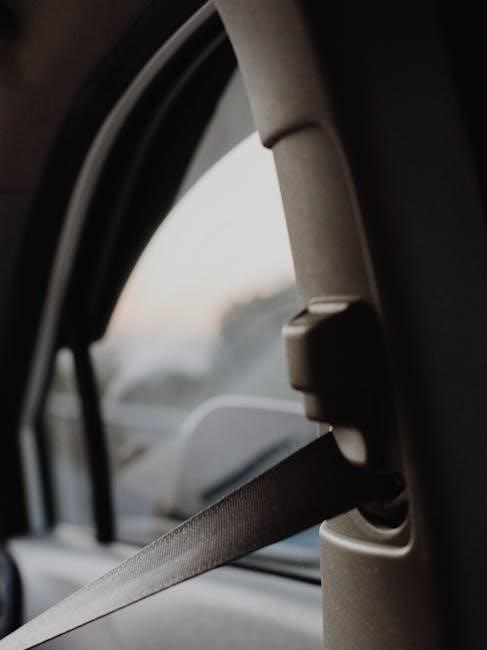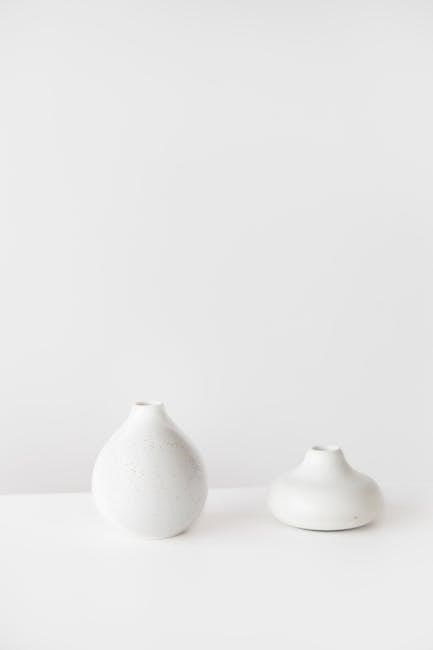Convertible car seats play a critical role in protecting children, offering versatility and safety as they grow. Proper installation and usage are essential to reduce injury risks and ensure comfort.
1.1 The Importance of Car Seat Safety for Children
Car seats are essential for protecting children during travel, significantly reducing the risk of injury or fatality in accidents. Proper installation and use of a convertible car seat ensure optimal safety, as they are designed to accommodate a child’s growth. Rear-facing seats are the safest option for younger children, while forward-facing seats provide protection as they grow older. The American Academy of Pediatrics recommends keeping children rear-facing until they reach the seat’s weight or height limit. Parents should always follow safety guidelines, such as avoiding bulky clothing and ensuring the harness is snug. Regularly checking the seat’s fit and installation is crucial for maintaining safety. Investing in a high-quality convertible car seat is a proactive step in safeguarding a child’s well-being on the road.
1.2 Overview of Convertible Car Seats
Convertible car seats are designed to provide long-term safety and comfort for children, adapting to their growth from infancy through early childhood. These seats can transition from rear-facing to forward-facing configurations, offering extended use as the child grows. Typically, they accommodate infants starting from birth up to a maximum weight and height limit, making them a cost-effective option for families. Convertible seats often feature adjustable harnesses, recline positions, and cushioning for optimal support. They are popular for their versatility, allowing parents to use a single seat for multiple stages of a child’s development. Many models also emphasize ease of installation and use, catering to diverse vehicle types and family needs. Their adaptability and safety features make convertible car seats a practical choice for ensuring a child’s protection on the road.
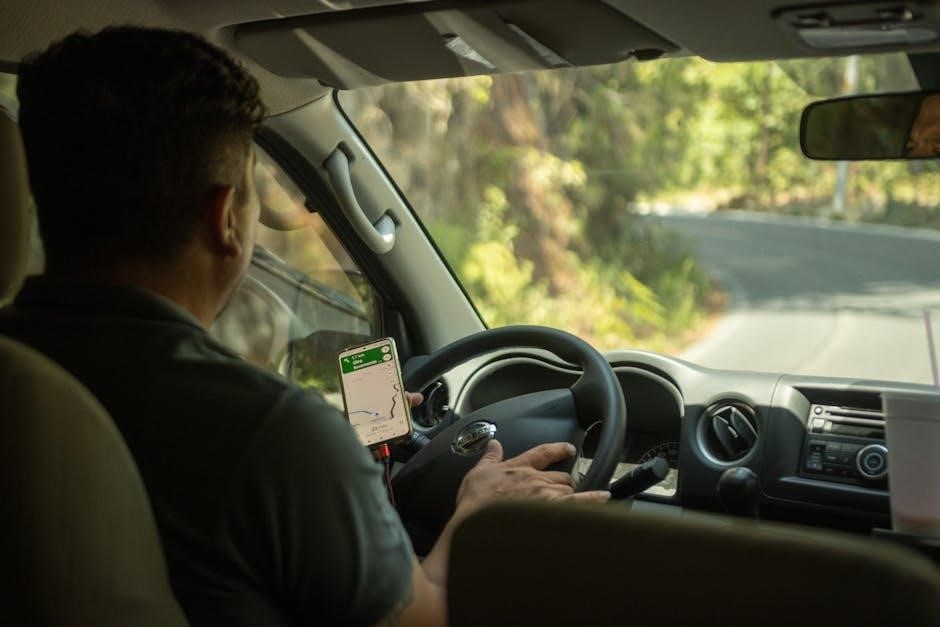
Key Features of Safety-First Convertible Car Seats
These seats offer adjustable harnesses, weight and height limits, and both rear- and forward-facing options, ensuring safety and adaptability as children grow and develop.
2.1 Weight and Height Limits
Convertible car seats have specific weight and height limits to ensure safe usage. Typically, rear-facing seats accommodate children up to 40-50 pounds and 49 inches tall, while forward-facing seats support up to 65-85 pounds and 57 inches. These limits vary by model, so checking the manufacturer’s guidelines is crucial. Exceeding these limits can compromise safety, as the seat may no longer protect the child effectively in a crash. Parents should regularly monitor their child’s growth and adjust the seat accordingly. Proper fit ensures optimal protection and comfort, making it essential to adhere to the specified weight and height restrictions for each mode of use.
2.2 Rear-Facing and Forward-Facing Options
Convertible car seats offer both rear-facing and forward-facing options to accommodate a child’s growth. Rear-facing seats are recommended for infants and younger children, as they provide superior protection for the head and neck in the event of a crash. Most convertible seats can be used rear-facing up to 40-50 pounds and 49 inches tall. Forward-facing seats are suitable for older children who have outgrown the rear-facing limits. The transition should only occur when the child meets the manufacturer’s weight, height, and age requirements. Proper use of these modes ensures optimal safety and comfort. Always consult the seat’s manual for specific guidelines on transitioning between modes, as misuse can compromise protection. Rear-facing is generally safer for younger children, but forward-facing becomes appropriate as they grow older and larger.
2.3 Adjustability and Customization
Adjustability and customization are key features of safety-first convertible car seats, ensuring a proper fit for children of various sizes. Many seats offer no-rethread harnesses, allowing parents to adjust the height without removing the seat from the vehicle. Recline settings are also customizable to ensure the seat fits securely in different vehicles. Additionally, some models feature adjustable headrests and cushions for comfort and support. Diono convertible car seats, for example, are praised for their ease of adjustment, making installation less daunting. Customization options ensure the seat grows with the child, providing a snug and secure fit. Proper adjustment is critical for safety, as it prevents excessive movement and ensures the harness fits correctly. Always refer to the manufacturer’s instructions for guidance on adjusting and customizing the seat to meet your child’s needs and your vehicle’s specifications.
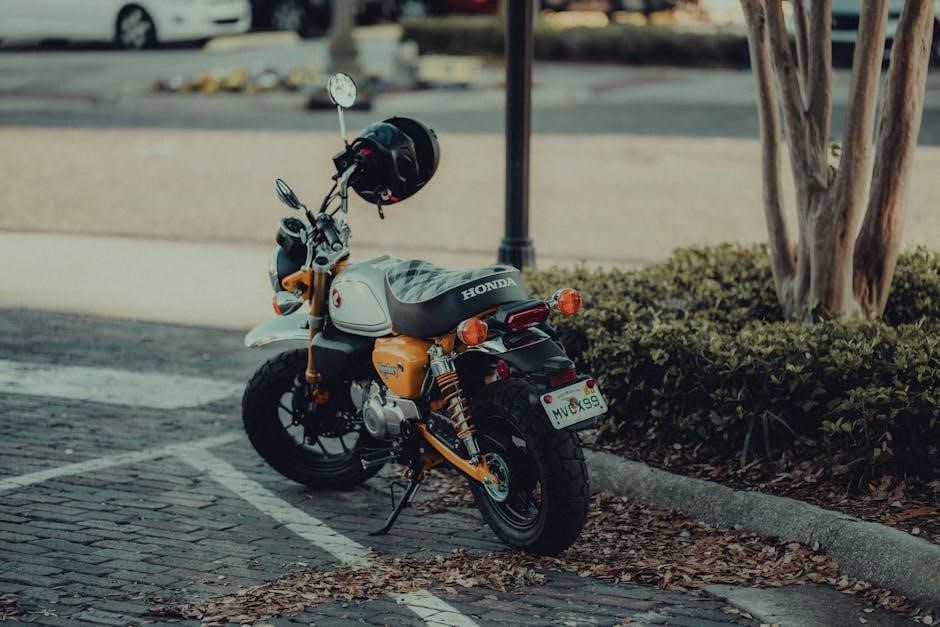
Installation Guidelines
Proper installation is crucial for car seat safety. Use the vehicle seat belt or LATCH system, ensuring the seat is tightly secured with no excessive movement.
3.1 Rear-Facing Installation
Rear-facing installation is the safest for infants and toddlers. Position the seat in the backseat, securing it with a seat belt or LATCH system. Ensure the base is tightly fastened, with no more than one inch of movement. The harness must be snug, with the chest clip at armpit level. Check the recline angle using the built-in indicator for proper positioning. Avoid adding extra padding or toys, as they can interfere with safety. Regularly inspect the installation to maintain a secure fit as your child grows. Always follow the manufacturer’s instructions for specific models, as guidelines may vary. Proper installation significantly reduces the risk of injury in the event of a crash.
3.2 Forward-Facing Installation
Forward-facing installation is appropriate when your child meets the weight and height limits for rear-facing. Secure the seat using the vehicle’s seat belt or LATCH system. Position the seat belt or LATCH straps through the designated forward-facing slots; Tighten the straps until the seat is firmly in place with minimal movement. Ensure the harness is snug, with the chest clip at armpit level. The seat’s headrest should be adjusted to fit your child’s head without tilting their chin upward. Always verify the recline angle is correct for forward-facing use, as indicated in the manual. Double-check the installation by tugging the seat and ensuring it does not move more than one inch in any direction. Proper installation is crucial for maximizing safety in forward-facing mode.
3.3 Vehicle Seat Belt vs. LATCH System
When installing a convertible car seat, choosing between a vehicle seat belt and the LATCH (Lower Anchors and Tethers for Children) system depends on your vehicle and seat type. Both methods are safe if used correctly. The LATCH system is often easier to use, with built-in anchors and tethers, reducing the risk of incorrect installation. However, it may have weight limits, typically around 65 pounds for the lower anchors. Seat belts offer universal compatibility and are ideal for vehicles without LATCH or when the child exceeds the LATCH weight limit. For seat belt installation, ensure the belt is snug and lies flat across the seat. Always consult your vehicle and car seat manuals for specific guidance, as some seats may require a locking clip for secure installation. Proper use of either method ensures a safe and stable fit for your child.
Usage and Safety Tips
Always follow manufacturer guidelines for harnessing, recline angles, and weight limits to ensure optimal safety and comfort for your child while using a convertible car seat.
4.1 Proper Harnessing Techniques
Proper harnessing is crucial for child safety. The straps should be snug, with no slack, and the chest clip positioned at armpit level. Ensure the harness is neither too loose nor too tight, as this can compromise protection. Regularly check the fit, especially as your child grows. Always refer to the manufacturer’s instructions for specific guidance on adjusting the harness and chest clip. Improper harnessing can lead to increased injury risk in the event of sudden stops or accidents. Additionally, avoid bulky clothing that may create gaps between the harness and your child’s body, as this can affect the seat’s ability to restrain effectively. Proper harnessing ensures optimal protection and comfort for your child while using a convertible car seat.
4.2 When to Transition to Forward-Facing
Transitioning to forward-facing should occur when your child meets the manufacturer’s weight and height limits for rear-facing use, typically around 50 pounds or 49 inches. Always prioritize rear-facing for as long as possible, as it provides superior protection. When transitioning, ensure the car seat is installed correctly and securely using either the vehicle’s seat belt or LATCH system. The harness straps should be snug and positioned at or below your child’s shoulders. Avoid premature transitions, as they can compromise safety. Check your car seat’s manual for specific guidelines, as limits vary by model. Proper installation and adherence to weight and height restrictions are critical to ensuring your child’s safety in a forward-facing position;
4.3 Maintaining the Correct Recline Angle
Maintaining the correct recline angle is crucial for your child’s safety and comfort in a convertible car seat. The angle ensures proper support for your child’s head, neck, and body, especially in the event of sudden stops or accidents. Most car seats come with built-in recline indicators or level lines to guide you. For rear-facing seats, the recline angle is typically more upright as your child grows. When transitioning to forward-facing, the angle may adjust slightly. Always refer to your car seat’s manual for specific recline recommendations. Ensure the seat is not too reclined or too upright, as this can affect the harness fit and overall safety. Regularly check and adjust the angle as your child grows to ensure optimal protection and comfort.
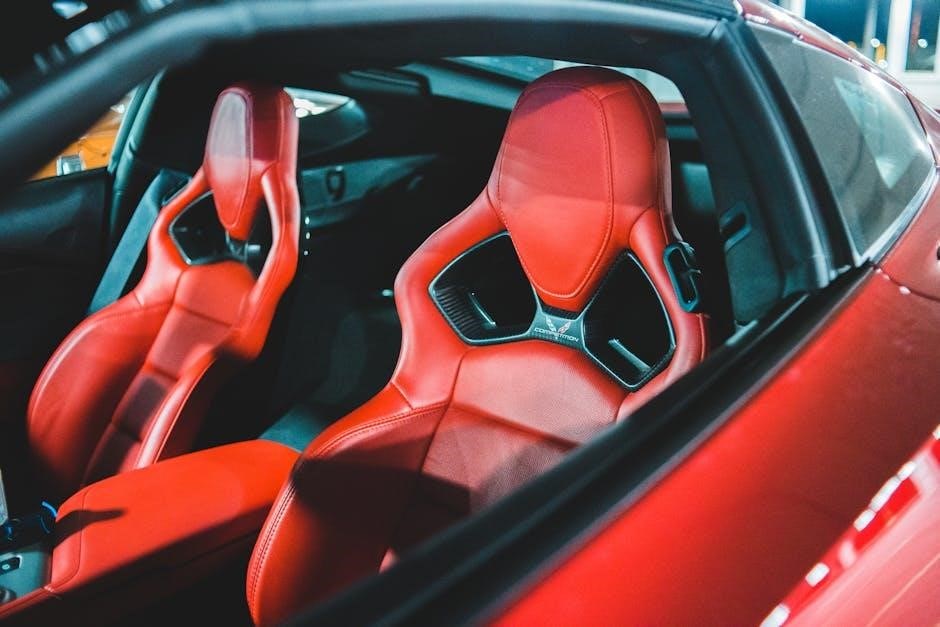
Safety Standards and Certifications
Convertible car seats must meet rigorous federal safety standards, ensuring they protect children in crashes. Look for certifications like FMVSS 213 and third-party testing for added assurance.
5.1 Federal Safety Standards for Car Seats
Federal safety standards, such as FMVSS 213, set strict guidelines for car seat performance in crashes. These standards ensure seats can withstand forces and protect children effectively.
5.2 Third-Party Testing and Ratings
Third-party testing and ratings provide additional assurance of a car seat’s safety and performance. Organizations like Consumer Reports and the National Highway Traffic Safety Administration (NHTSA) conduct rigorous tests, evaluating crashworthiness, ease of use, and installation features. These ratings help parents make informed decisions, ensuring their choice meets high safety standards. For instance, Diono convertible car seats are praised for their robust safety features and ease of installation, while the Nuna Rava is recognized for its premium design and excellent crash test performance. These independent assessments complement federal standards, offering parents further confidence in their selection. By considering third-party ratings, families can choose a convertible car seat that aligns with their safety priorities and vehicle compatibility needs.
Common Mistakes to Avoid
Avoiding common mistakes is crucial for maximizing car seat safety. Incorrect installation, premature forward-facing transitions, and loose harnesses are frequent errors that can compromise protection. Stay vigilant.
6.1 Incorrect Installation
Incorrect installation is a leading cause of car seat inefficiency. Common mistakes include loose seat belts, improper recline angles, and misaligned LATCH connectors. Ensure the seat is tightly secured, minimizing movement. Always follow the vehicle’s manual and car seat instructions. Double-check the recline angle for rear-facing seats, as specified by the manufacturer. Avoid using both the seat belt and LATCH system simultaneously unless instructed. Additionally, never install a car seat in the front seat with an active airbag. Regularly inspect the installation to prevent wear and tear. If unsure, consult a certified technician or local car seat check event. Proper installation is the first line of defense in protecting your child.
6.2 Premature Transition to Forward-Facing
Prematurely transitioning a child to a forward-facing position is a common yet dangerous mistake. Rear-facing seats provide superior protection for a child’s head, neck, and spine, especially for younger children. The American Academy of Pediatrics recommends keeping children rear-facing until they reach the car seat’s weight or height limit, typically around 4 years old. Transitioning too early can increase the risk of serious injury in the event of a crash. Ensure your child meets all size requirements before switching. Additionally, check the car seat manual for specific guidelines, as limits vary by model. Delaying the transition ensures optimal safety and aligns with best practices for child passenger safety. Always prioritize your child’s physical development and safety standards over convenience or urgency.
6.3 Loose Harness or Improper Fit
A loose harness or improper fit is a critical safety oversight that can compromise protection in a crash. Ensure the harness straps are snug, with no excess material, and pass the “pinch test”—if you can pinch any fabric, it’s too loose. The chest clip should be at armpit level to properly distribute forces. Additionally, avoid bulky clothing like winter coats, as they can create gaps in the harness. Proper fit also involves the car seat’s position in the vehicle. Always refer to the car seat manual for size and fit guidelines specific to your model. If unsure, consult a certified car seat technician. A well-fitted harness ensures maximum safety and effectiveness, reducing the risk of injury in the event of an accident.
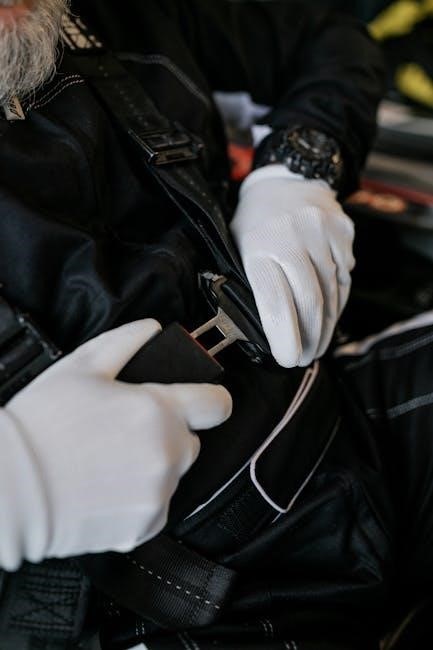
Troubleshooting Installation Issues
Troubleshooting installation issues involves checking for proper tightness and addressing vehicle compatibility. Ensure the seat is snug and fits well with your car’s seat belt or LATCH system.
7.1 Checking for Proper Tightness
Ensuring your convertible car seat is properly secured is crucial for safety. Start by tightening the seat belt or LATCH straps, making sure there’s no slack. The seat should feel firm against the vehicle’s seat. To check tightness, grab the car seat at the base and attempt to move it side to side or front to back. If it moves more than an inch in either direction, the installation isn’t secure enough. Use the vehicle’s seat belt or LATCH system to tighten further until the seat is stable. Additionally, ensure the harness is snug around your child, with no excess fabric that could compromise protection in the event of sudden stops or collisions.
7.2 Addressing Airplane Seat or Vehicle Compatibility
When using a convertible car seat on an airplane or in different vehicles, compatibility is key. Check if your car seat is FAA-approved for air travel, as indicated by a label on the seat. On planes, use the vehicle seat belt to secure the car seat, ensuring it’s tightly fastened. For vehicles, test the car seat in various models to confirm it fits properly, especially considering the seat’s size and the vehicle’s seat configuration. Some car seats may require additional support or accessories for optimal fit in smaller cars or larger vehicles. Always consult the car seat’s manual and the vehicle’s owner’s manual for specific installation guidelines to ensure safety across different settings.
Additional Safety Considerations
Additional safety considerations include ensuring winter coats don’t compromise the harness fit, safely traveling with the car seat, and regularly checking for wear and tear.
8.1 Winter Coats and Car Seat Safety
Winter coats can pose a safety risk if worn under a car seat harness, as they can create slack, reducing the harness’s effectiveness in a crash. Parents should dress children in thin, warm layers that allow the harness to fit snugly. Alternatively, place coats or blankets over the harness after it’s properly secured. This ensures the child stays warm without compromising safety. Always check the harness fit by pinching the shoulder strap; if you can pinch any material, it’s too loose. Regularly inspecting the harness and adjusting clothing helps maintain optimal protection during colder months.
8.2 Traveling with a Convertible Car Seat
Traveling with a convertible car seat requires careful planning to ensure safety and convenience. Always check the vehicle’s compatibility with your car seat, especially in unfamiliar cars or airplanes. When flying, most convertible car seats are approved for airplane use, but confirm with the airline and the seat’s manual. Ensure the seat is properly secured using the vehicle’s seat belt or LATCH system, even on long trips. Consider the ease of installation in different vehicles, as some seats are designed for simpler transitions. Additionally, always verify that the seat fits snugly and that the harness is correctly adjusted for your child. Proper preparation and double-checking the installation before travel can help ensure a safe and stress-free journey for your family.
Product Reviews and Recommendations
Top-rated convertible car seats like the Graco TriRide and Britax Poplar are praised for their safety, durability, and ease of use, making them excellent choices for families.
9.1 Top-Rated Convertible Car Seats
The Graco TriRide 3-in-1 and Britax Poplar S are highly recommended for their exceptional safety features and versatility. Both seats are designed to accommodate children from birth to booster age, offering rear-facing, forward-facing, and booster modes. The Graco TriRide is notable for its affordable price point and impressive 30-pound discount during Amazon Prime Day, making it a budget-friendly option without compromising on quality. Meanwhile, the Britax Poplar S stands out with its robust construction and ability to support children up to 50 pounds in the rear-facing position, aligning with safety experts’ recommendations to keep kids rear-facing as long as possible. Both models are praised for their ease of installation and use, ensuring parents can maintain their child’s safety without hassle.
9.2 Budget-Friendly Options
For families seeking affordable yet safe choices, budget-friendly convertible car seats like the Graco TriRide 3-in-1 offer exceptional value. Priced attractively, this seat provides three modes—rear-facing, forward-facing, and booster—catering to children from birth to booster age. Its discounted price during events like Amazon Prime Day further enhances its appeal. Diono convertible seats are another cost-effective option, known for their ease of installation and high safety ratings. These models ensure parents can prioritize their child’s safety without exceeding their budget. Both Graco and Diono seats are praised for their durability and user-friendly designs, making them practical choices for families seeking reliable, wallet-friendly solutions.
Proper car seat installation and usage are vital for child safety. Always follow safety guidelines and expert recommendations to ensure your child’s protection while traveling.
10.1 Recap of Key Safety Practices
Ensuring your child’s safety in a convertible car seat requires consistent adherence to best practices. Always install the seat correctly, following the manufacturer’s instructions, and verify tightness. Keep your child rear-facing as long as possible, up to the seat’s weight and height limits. Use the harness snugly, with the chest clip at armpit level, and avoid bulky clothing. Maintain the correct recline angle for optimal protection. Transition to forward-facing only when necessary and ensure proper fit. Regularly inspect the seat for wear and tear, and never use it after an accident. Stay informed about safety updates and recalls. By prioritizing these practices, you can significantly reduce risks and ensure your child’s safety on the road.
10.2 Final Tips for Parents
Always prioritize your child’s safety by following the manufacturer’s instructions and staying informed about car seat safety guidelines. Ensure proper installation and adjust the seat as your child grows. Keep your child rear-facing as long as possible to maximize protection. Avoid using bulky clothing or accessories that could compromise the harness fit. Regularly inspect the seat for wear and tear, and never use a seat that has been in an accident. Stay updated on recalls and safety standards. If unsure, consult a certified car seat technician for guidance. By adhering to these practices, you can help minimize risks and provide a safe environment for your child during travel. Consistency and vigilance are key to ensuring their protection on the road.
